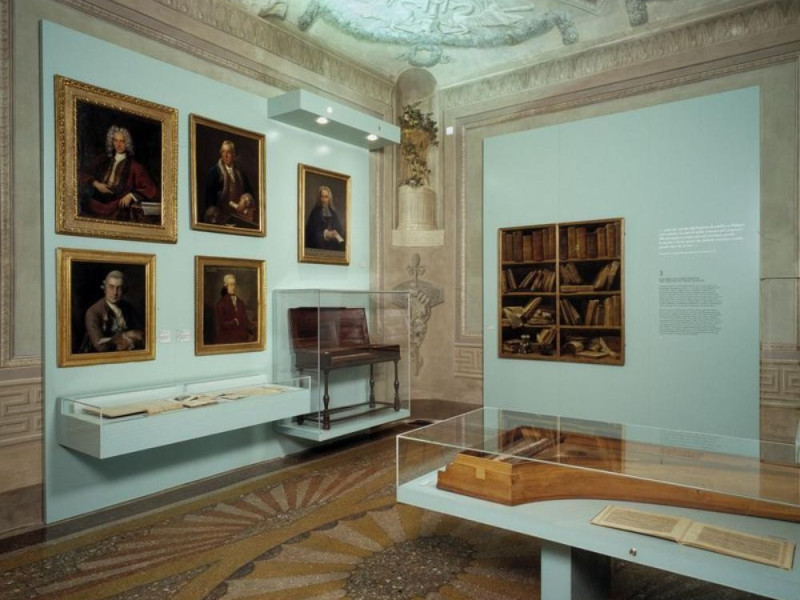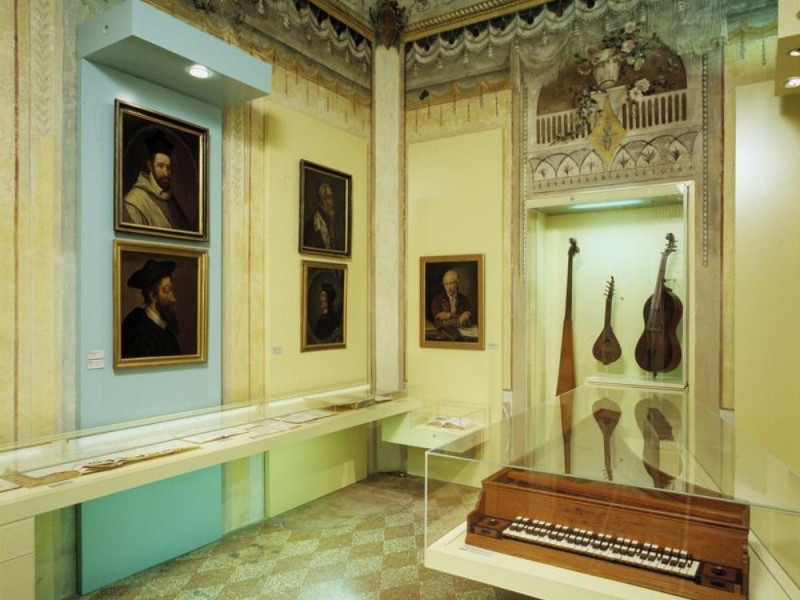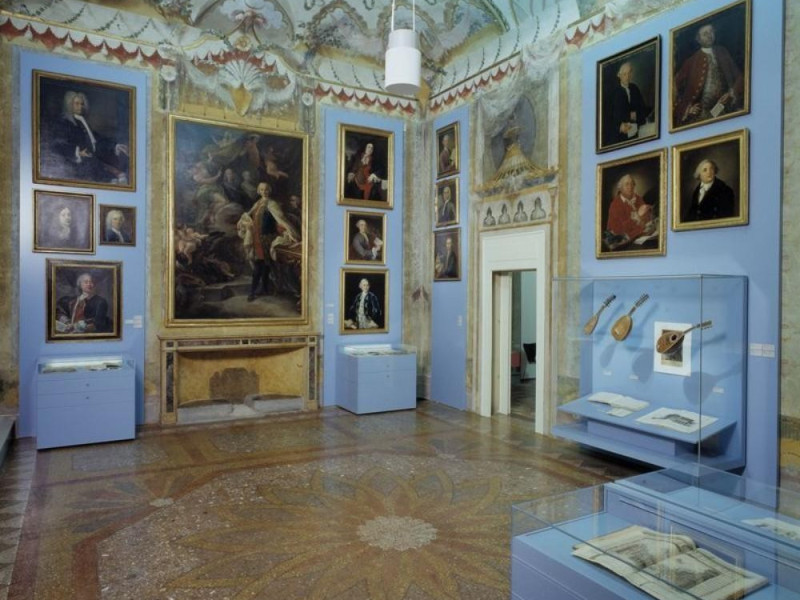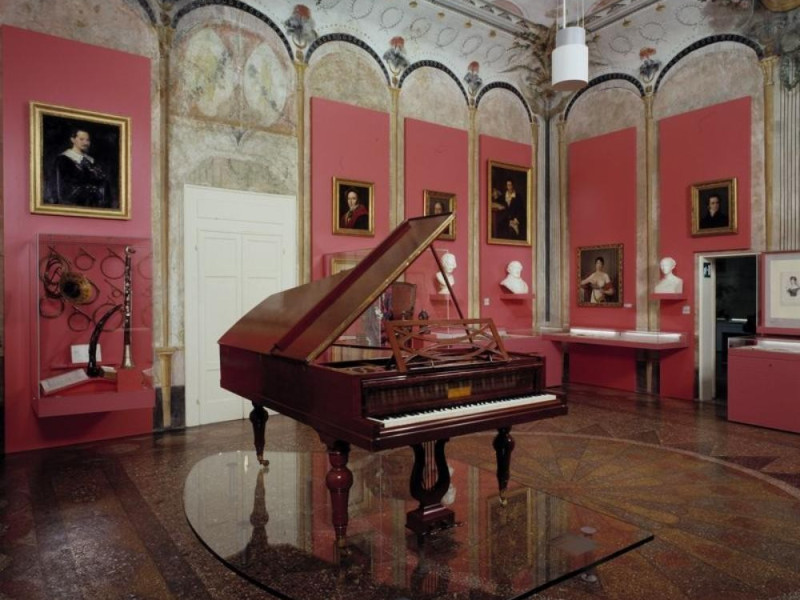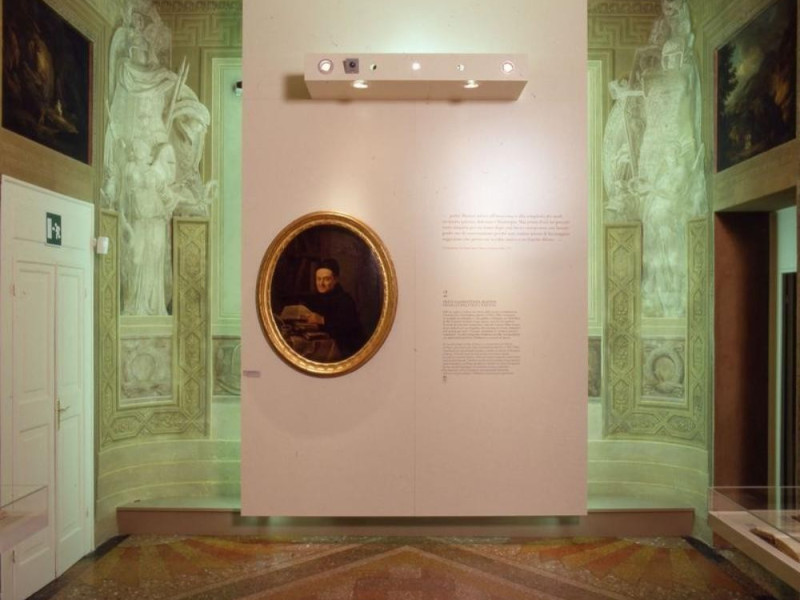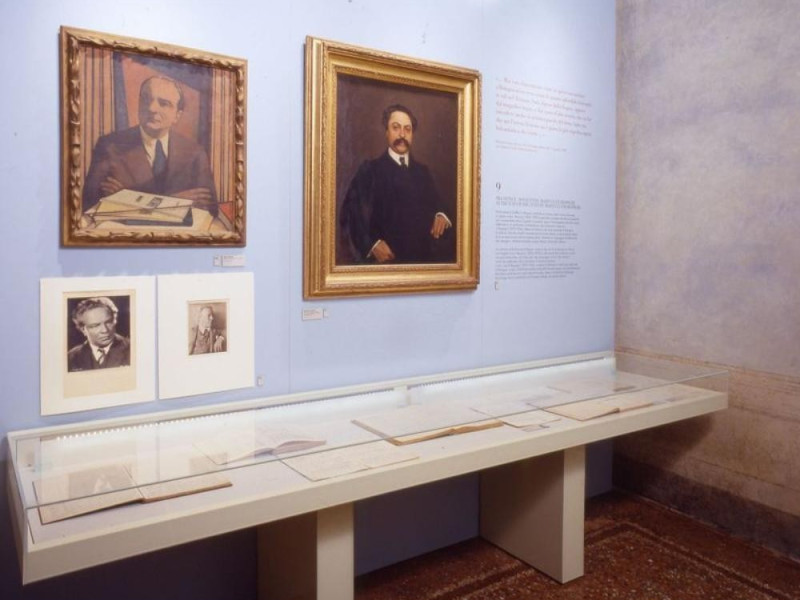Museo internazionale e biblioteca della musica
The International Museum and Library of Bologna is a music museum and library located in the Palazzo Aldini Sanguinetti, in the historic center of Bologna.
The Civico Museo Bibliografico Musicale was founded in 1959 to hold the Comune di Bologna's collection of musical objects. It was renamed International Museum and Library of Bologna in 2004 when the museum's current site, the Palazzo Sanguinetti, opened to the public. The palace, located in the historic center of Bologna, was reopened after a long and careful restoration that brought the rich, interior frescoes back to their original splendor. These frescoes were first completed between the late 18th century and early 19th century, and provide one of the finest examples of Napoleonic and Neoclassical decoration.
The purpose of the museum was to make the public aware of the rich musical heritage owned by the Comune di Bologna. Until recently, much of this heritage remained confined in warehouses – primarily due to lack of adequate space – and was only brought out occasionally for temporary expositions.
Palazzo Sanguinetti offered the possibility to enhance the cultural value of such precious musical heritage and to assure an expository frame worthy of the priceless items displayed. The palace also guarantees ideal conditions for managing and conserving these items.
The institute is now divided into two sites. An ample selection of volumes, paintings, and musical instruments are displayed in the museum halls in Strada Maggiore 34 (Palazzo Sanguinetti), while the majority of bibliographic material is accessible in Piazza Rossini 2 (the ex-Convent of San Giacomo) in rooms attached to the G.B. Martini Conservatory of Music.
In the early 16th century, the original core of the Palazzo Sanguinetti belonged to the Loiani family. The building was sold in 1569 to the Bolognese brothers, Ercole and Giulio Riario, who were originally from Savona and related to the della Roveres. Having acquired neighboring land and buildings, Senator Ercole Riario had the home reconstructed and enlarged. The individual homes were united into one structure, and construction on the impressive staircase, which still characterizes the building today, was likely begun. The second major reconstruction was commissioned by Count Antonio Aldini, to whom the Marquis Raffaello Riario Sforza had granted a long-term lease in 1796. Count Aldini tasked the architect Giovanni Battista Martinetti (1774–1830) with modernizing the building. A neighboring house was attached to the tower belonging to the Oseletti family, and the huge 16th century hall was divide into two rooms, which correspond to the modern museum's two most spacious rooms – the vestibule, or the Room of Virtues, and the Ballroom.
Following the fall of Napoleon and the economic ruin of Aldini, the palace was sold to the Cuban nobleman don Diego Pegnalverd, a former member of the Napoleonic government. Upon his death in 1832, the palazzo passed to the famous tenor, Domenico Donzelli. It is noted that Gioachino Rossini stayed there while his own nearby home was under reconstruction. In 1870 the Sanguinetti family purchased the building. They were responsible for the most recent decorations in the intended library and the “Egyptian Room.” During recent renovations of the palazzo, marvelous frescoes were discovered in these two areas.
In 1986 the last heiress, Eleonora Sanguinetti, donated the larger part of the building to the Comune di Bologna in memory – as she wrote in her will – of “my unforgettable father, Dr. Guido Sanguinetti. I wanted to donate the building in Strada Maggiore 34 in his name and memory, and for the love that he always had for his city and his home, so that it could become a music museum and library.”
Because of the caliber of artists and the variety of subjects, the Palazzo Sanguinetti decorations are an exemplary anthology of 18th and 19th century neoclassicism and the Napoleonic era. The most important painters of the time, such as Pelagio Palagi, Serafino Barozzi, Vincenzo Martinelli, and Antonio Basoli, collaborated under the direction of Martinetti.On the ground floor, the landscape fresco (a magnificent trompe-l'oeil perspective) is attributed to Luigi Busatti, while the illusive architecture is the work of Francesco Santini (1763–1840). Santini, with the probable collaboration of Serafino Barozzi (1735–1810), also decorated the walls of the grand staircase.On the first floor, “...if you follow the designated course through the museum," Paola Foschi writes in the museum guide, "the Woodland Room (Room 1), used as a dining room and called the Banquet Room, is a product of Vincenzo Martinelli's (1737-1807) imagination: he illustrates landscapes rich with greenery and classical architecture in the distance. These classical elements surround the onlooker in the illusive step that supports hermas and statues of Bacchus and Ceres, works by the young Pelagio Palagi (1777-1860).” The Aeneas Room (Room 2) follows, also by Palagi, and is dedicated to the legend of the Trojan Hero and to Dido, queen of Carthage, who was loved and abandoned by him. Palagi developed the themes on a black, “Etruscan,” background. Room 3 is decorated with the Zodiac signs by Domenico Corsini (1774–1814) and contains the figure of Aurora, attributed to Palagi. The last small room of the east wing (Room 4) is decorated by artists from the Barozzi workshop. They are also credited with the two rooms (Rooms 6 and 7) that conclude the west wing, which are decorated in “oriental” style with curtains and pavilions, exotic plants, and feminine figures with small umbrellas. At the end of the museum tour are two salons in the apartment designed by Aldini; they were the first two rooms to be decorated. The original room (Room 8), is decorated by Antonio Basoli (1774–1848) in an almost “semi-gothic” style, with figures, statues, and bass reliefs by Pietro Fancelli (1764–1850). The other (Room 5) is the Ballroom.

